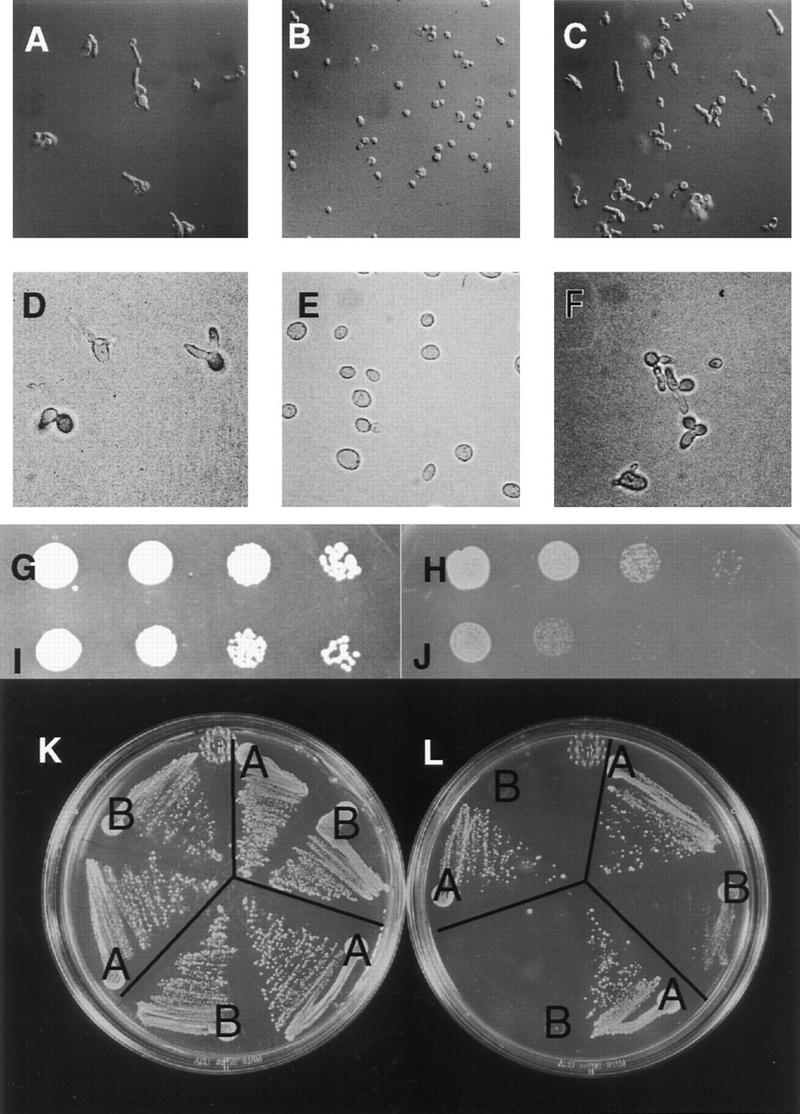Figure 2.

Genetic interactions of ENR2. (ROW 1) enr2Δ displays synthetic lethality with cdc34-2. (A) cdc34-2 enr2::LEU2 segregants, terminal phenotype at 20°C; (B) cdc34-2 ENR2 segregant at 20°C; (C) cdc34-2 ENR2 segregant at the nearly restrictive temperature 33°C. (ROW 2) enr2Δ enhances the temperature-sensitive phenotype of cdc4-1. (D) cdc4-1 enr2::LEU2 + empty vector at 25°C; (E) cdc4-1 enr2::LEU2 + p(ENR2, URA3, CEN4) at 25°C; (F) cdc4-1 enr2::LEU2 + p(ENR2, URA3, CEN4), terminal phenotype at 37°C. (ROW 3) enr2Δ enhances the ts phenotype of cdc53-1. (G) cdc53-1 enr2::LEU2 + p(ENR2, URA3, CEN4) at 30°C; (H) cdc53-1 enr2::LEU2 + p(ENR2, URA3, CEN4) at 33°C; (I) cdc53-1 enr2::LEU2 + empty vector at 30°C; (J) cdc53-1 enr2::LEU2 + empty vector at 33°C. Tenfold serial dilutions of individual transformants were grown on −Ura media with glucose as the carbon source for 2 days at the indicated temperatures. (ROW 4) enr2Δ enhances the temperature sensitivity of skp1-12. Three individual enr2::TRP1 skp1-12 segregants were transformed with either p(ENR2, URA3,CEN4) (streaks marked A) or with empty vector (streaks marked B), streaked on −Ura media with glucose as the carbon source, and incubated at either 30°C (K) or 33°C (L).
